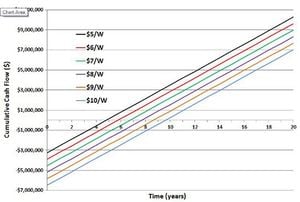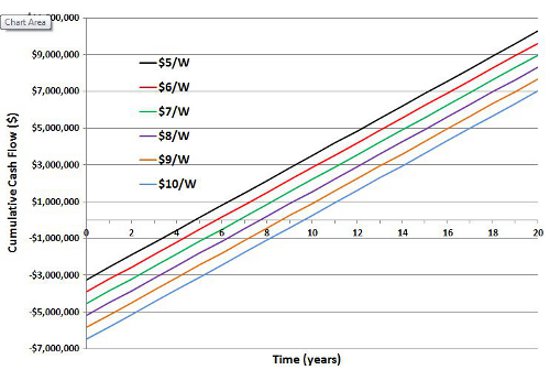
The Ontario feed-in tariff (FIT) for solar photovoltaic (PV) technology has provided Ontario's Aboriginal communities with an opportunity to i) weaken the cycle of poverty; ii) directly counteract climate change by producing renewable energy; and iii) become more self-sufficient. This paper critically analyzes the technical, cultural, and economic viability of leveraging the FIT for PV to provide green electricity and revenue to assist First Nations communities in sustainable development. A generalized free GIS-energy-based protocol was developed to determine the PV potential for Aboriginal communities. This model was applied to a case study of the Constance Lake First Nations community and an economic analysis showed financially-viable rates of return over 20 years. By generalizing these findings to Ontario, the potential PV deployment on First Nation rooftops alone is over 200MW, which clearly provides an opportunity for developing pride associated with owning a community-led, environmentally beneficial, local energy project.
Citation[edit | edit source]
Dirk V. P. McLaughlin, Nicole C. McDonald, Ha T. Nguyen and J. M. Pearce, "Leveraging Photovoltaic Technology for Sustainable Development in Ontario's First Nations Communities", Journal of Sustainable Development 3(3), pp. 3-13, 2010. open access
Background[edit | edit source]
According to Indian and Northern Affairs Canada (INAC), the living standards of Canada's Aboriginal communities fall well below those of the average Canadian citizen. The majority of the associated problems, such as poor housing conditions and health concerns, are directly tied to a lack of wealth of the communities and its citizens. The Ontario government's feed-in tariff (FIT) program offers Ontario's First Nations communities a guaranteed 20-year source of revenue through the purchasing of generated PV electricity. If a project is suitable, this significant revenue source could be used to address problems that plague the communities and accelerate their path towards self-sustainability.
This paper uses the Constance Lake First Nation community as a case study for a technical, cultural and economic analysis of setting up rooftop PV panels to obtain a FIT contract. The Constance Lake community is located in northern Ontario near the southwest tip of Hudson bay and consists of 702 residents. Its council and residents have expressed a strong interest in establishing revenue generating, environmentally beneficial projects.
Results[edit | edit source]
Economic Potential for Rooftop PV: Constance Lake - South-Facing Rooftops[edit | edit source]
An economic analysis was performed for the south-facing, non-shaded rooftops in Constance Lake. Orthographic images and ArcGIS were used to determine the amount of available and appropriate roofspace. RetScreen was used to estimate the yearly electricity production from the 1.76 MW worth of p-Si panels and the associated revenue. The economic analysis results are shown in the following table and graph:


As is evident from the figures, Constance Lake has the potential to install a highly profitable system of rooftop PV panels. Even with the worst case installed cost scenario of $10/W, the internal rate of return (IRR) over the 20-yr FIT contract is still 8.3%. At a realistic, $7/W the IRR is an exceptional 13.7% with a payback period of 6.7 years.
Economic Potential for Rooftop PV: Ontario's First Nations[edit | edit source]
Extrapolating the PV potential of Constance Lake's community to all of Ontario's Aboriginal communities leads to the estimate that 214 MW of PV capacity could be installed. This widespread installment of solar panels would cause a significant shift in Ontario's renewable energy production while improving the financial situation of its many Aboriginal communities.
Citation List[edit | edit source]
The list of sources used in the paper can be found here: Leveraging Solar Photovoltaic Technology for Sustainable Development in Ontario's Aboriginal Communities - papers used
Contact[edit | edit source]
The author can be contacted at pvdirk@gmail.com